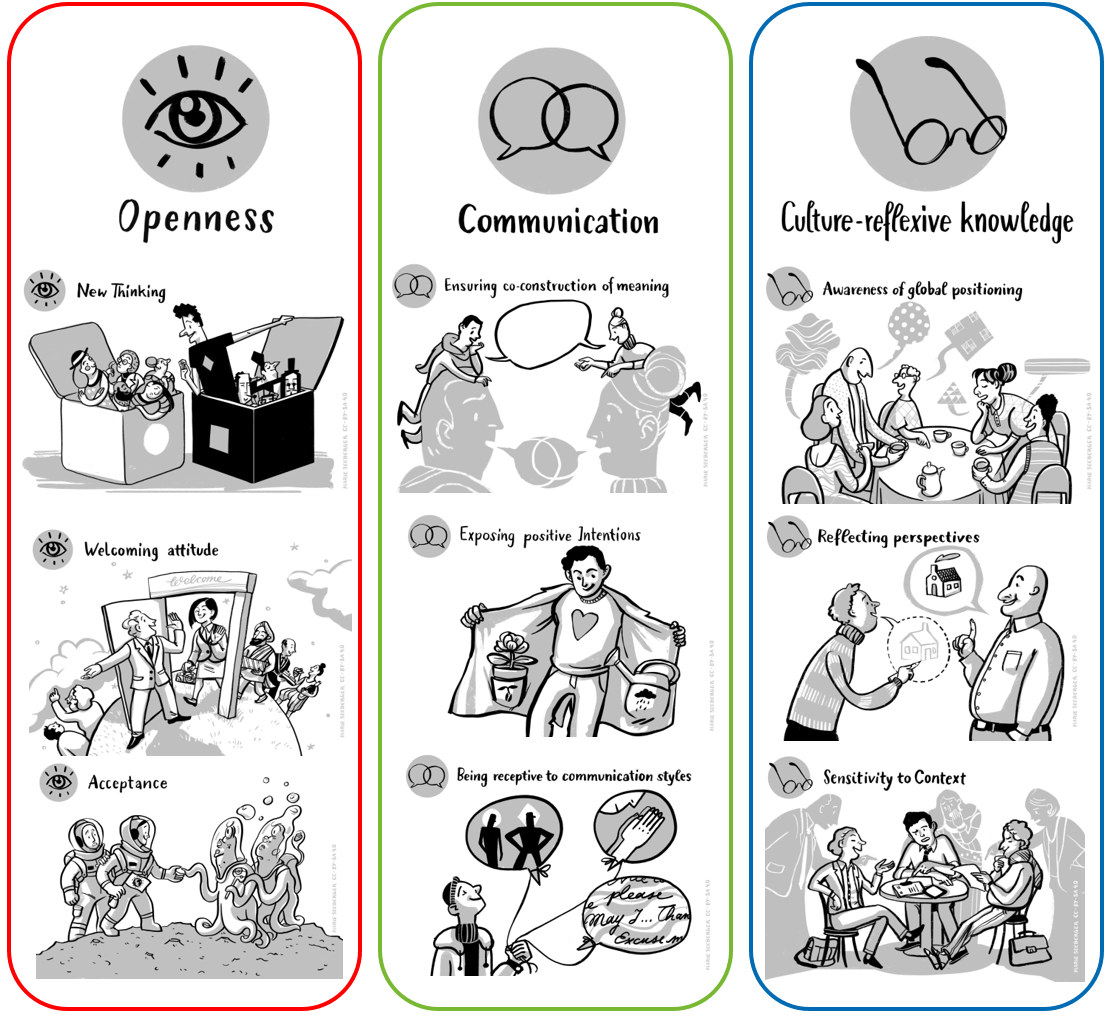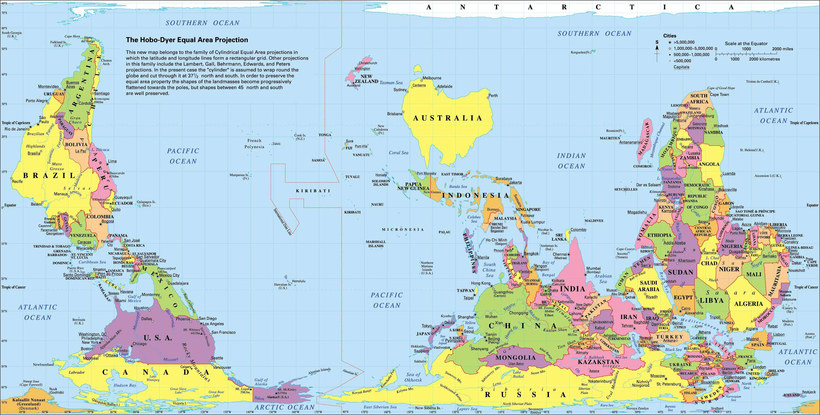In this session we want to bring core intercultural competencies closer to you which are being summarised under the key aspects of openness, communication and culture-reflexive knowledge. We want to do this by exploring their meanings, by giving examples of how they are being expressed in behavior and work settings, and by offering activities which help you to assess your learnings.
Key areas of intercultural competence
Illustrations by Marie Seeberger (www.behance.net/marieseeberger) CC-BY-NC-SA 4.0 license
Click on the image for a larger view
***
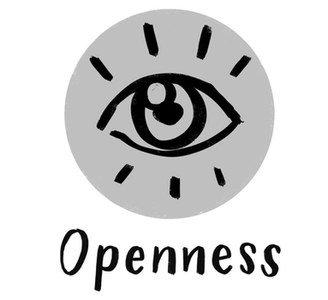
Openness in the sense of being ready to explore new situations and feeling comfortable in unfamiliar and at times highly complex situations is surely a valuable trait to address intercultural encounters constructively. Openness encompasses new thinking and a welcoming attitude which can be understood as the readiness to initiate relationships with new people and those who may be very different for example with regard to their personal or cultural backgrounds, experiences and behaviors. If we want to develop a common ground it is also important to accept behavior that may be very different from our own or even be in conflict with our own sense of best practices.
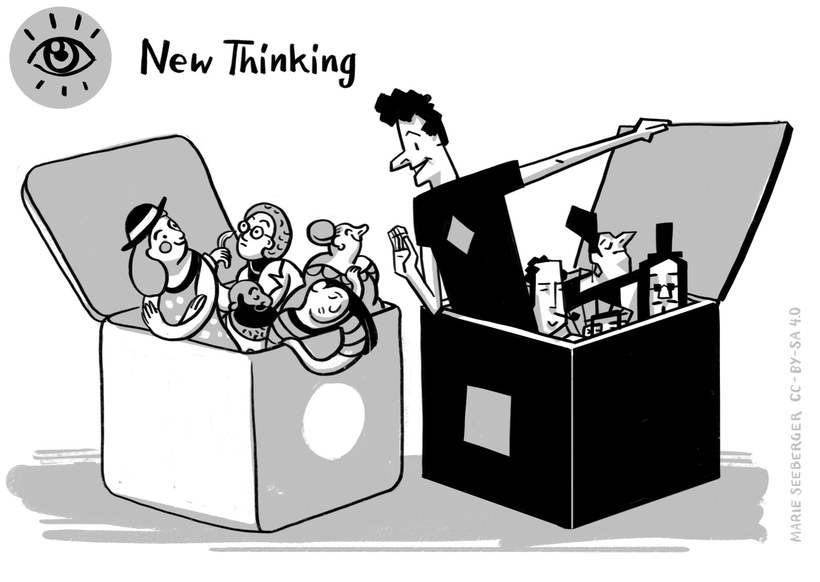
Meaning
People who have the competency of New Thinking feel passionate about following up with new ideas or developments. These are people who have a natural curiosity and like to venture into new and unfamiliar fields. They also like to view things from different perspectives, challenge established facts, and like to get "to the bottom" of things by learning more about the background and connecting the dots. Using their curiosity as well as their natural sense of creativity they like to find "out of the box" solutions for established challenges.
Example
Priscilla is working as an engineer, where she enjoys to stay ahead of new developments in her fields. When a global pandemic hits, everyone is restrained to work on a virtual level. Priscilla sees the challenge, but especially the opportunities this new situation brings. She enjoys the steep learning curve when it comes to using different platforms for collaboration, and the opportunity to quickly get the ideas and information from colleagues from the whole globe together. She enjoys the mutual learning that she can take from her colleagues of the 4 continents she is working with. Of course, she misses the face-to-face interaction with her colleagues sometimes, but finds new solutions for connecting to them on a virtual level, using a variety of different tools she finds available after active research.
Activity: Dealing with opposing views
Open a newspaper or a website that you usually would not read because the views displayed here do not depict your own. Pick an article, maybe a commentary, which you reckon to be quite different from what you believe and what your common understanding is. When you read the article, ask yourself how you can deal with opposing views or behaviour. Is there anything in the reading that enriches your worldview?
Choose two aspects from the article or commentary, describe them briefly in your learning journal and note down the new thinking which developed from your reflection.
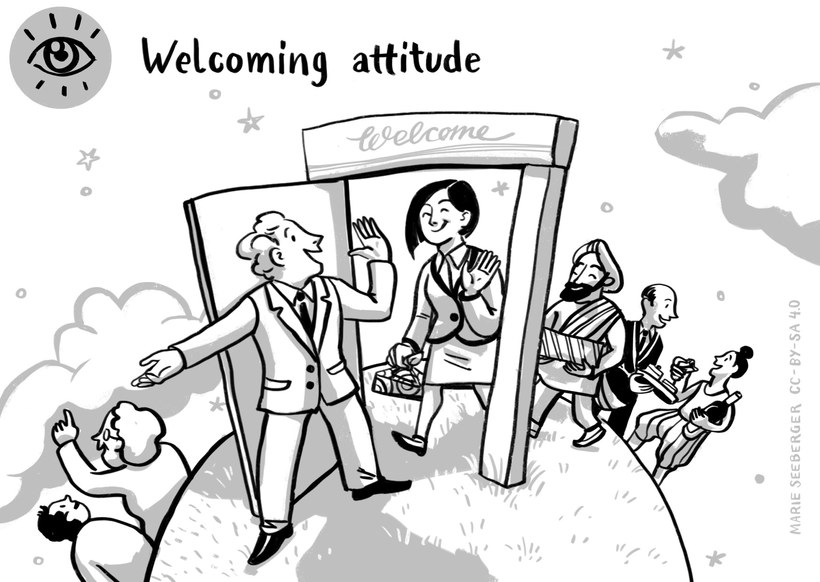
Meaning
People with a Welcoming Attitude like to meet and learn from individuals that might have different thoughts or backgrounds compared to their own. They find it interesting to exchange thoughts with people that have very different experiences. Besides, these people find it well within their comfort zones to take the initiative and approach people that might dress or behave differently than themselves, or also speak another language. They also find it fulfilling to help those who might come from other cultural backgrounds and look for orientation.
Example
Yaoting takes a semester abroad in India. She knows many students that come from the same country as she does, but she is much more interested in meeting with local Indian students, as she finds it fascinating to learn about their way of life and cultural backgrounds. As her fellow Indian students notice her genuine curiosity, they are happy to share more about their experiences and ways of thinking with her. At the end of the term, Yaoting has made many friends there, who feel sorry to see her leave.
Activity: Mastering an unknown situation
Remember a situation where you mastered an unknown situation well, for example when you got into contact with a former unfamiliar person or faced a behaviour you do not cherish at all. Do you also remember your inner hurdles and hesitations? What helped you to foster a welcoming attitude and embrace the moment?
Note down the story in your learning journal together with a short commentary as to what was helpful in dealing with the situation well. The strategy you used is a valuable resource to remember and to be used again. It follows the motto: "If you are not my friend, you are my coach".
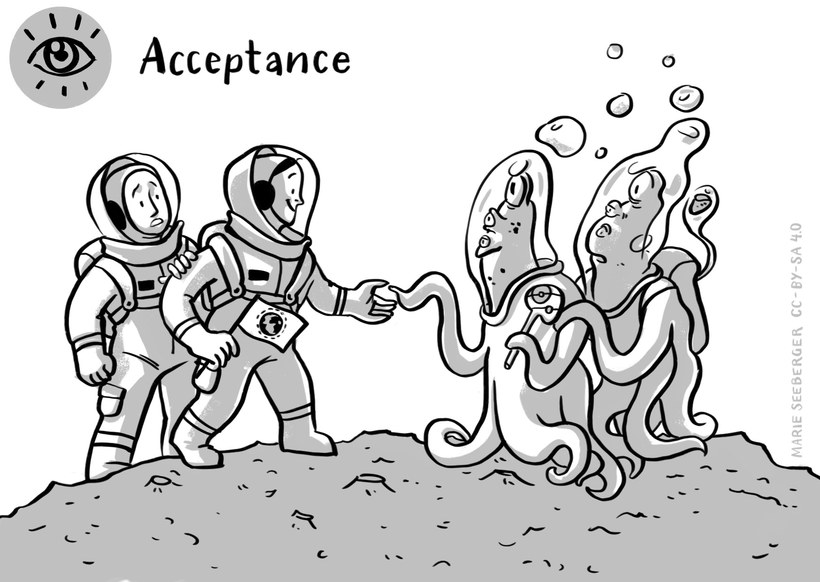
Meaning
In short, to have a high level of Acceptance means to avoid judgments about other people´s behaviours, especially if these do not conform to our expectations. Especially when we encounter behaviour that might be seen as disrespectful in our own cultural experience, we need to try to understand the background rather than to judge too quickly. Because a quick judgment can hinder us from understanding other possible reasons behind other people's behaviour, to be open-minded enables us to see the bigger picture. However, Acceptance is more than about tolerance and understanding our counterparts. It is also the awareness that other work practices can expand our own horizon and help us to grow.
It does not, however, mean that we need to like or copy any other behaviour from other people. All of us have limits to our level of acceptance, which are often deeply rooted in our value system. There are several ways to deal with these limits in an "accepting" way. As mentioned, we can see them as an opportunity to learn and grow from them. Another way may be to tolerate these differences. That means, if a behaviour or concept might be very difficult for us to accept, it could also be a viable strategy to try avoid the confrontation, and withhold our judgement. The prerequisite of acceptance is to respect an approach that differs from my own.
Example
When Florian is giving a presentation abroad, he notices that many people seem to be very busy with other things. While some members of his audience write something in their laptops, others are looking at their phones, or even closed their eyes for a nap. He can well imagine that many people with his cultural background would find this disrespectful. Florian however uses a different approach by asking questions and discussing his observations with some local friends. When they see that Florian is curious to understand the behaviour he is not familiar with and openly asks questions, his friends are happy to explain it to him. Florian feels if he had judged the behaviour of his audience as disrespectful right away, this would have left him with a strong feeling that his presentation was not being acknowledged and his work not appreciated which was not true.
Activity: Case "Not telling the truth"
Please read the following example, then answer the questions below in your learning journal.
Example
Marie started working recently as a nurse abroad in a small Ugandan town. One day, she sits with her co-worker, a young nurse called Nina. When Marie asks her if she has any children, she smiles and says "no". Some days later, Marie finds out that Nina was not honest about it. She actually has two little children at home.
- On a scale from 1 (= nearly no acceptance) to 10 (= full acceptance), how would you assess your ability to accept that behaviour? Note down a number.
- Imagine you wrote down 3 (or 5 or 8). Explain why it is not less than this number. What would help you to accept Nina's behaviour?
***
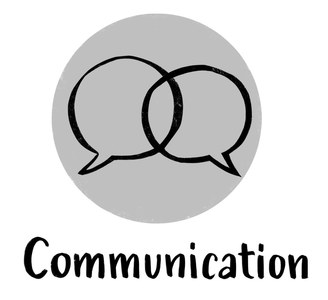
Another set of competencies is linked to communication and thus the ability to absorb, share and understand information considering the sender's perspective and respond in a way that is comprehensible from the receiver's point of view. In short, it is the ability to communicate in a way that minimizes the potential for misunderstandings. It is thus not surprising that ensuring the co-construction of meaning is an important aspect in this context. Being able to establish and maintain trust by exposing positive intentions is another valuable trait to support the development of a common ground. Knowing about different communication styles and interpretations and usage of non-verbal signals is the basis for the ability to be receptive to communication styles and non-verbal signs. Such an ability greatly supports understanding and the co-creation of meaning.
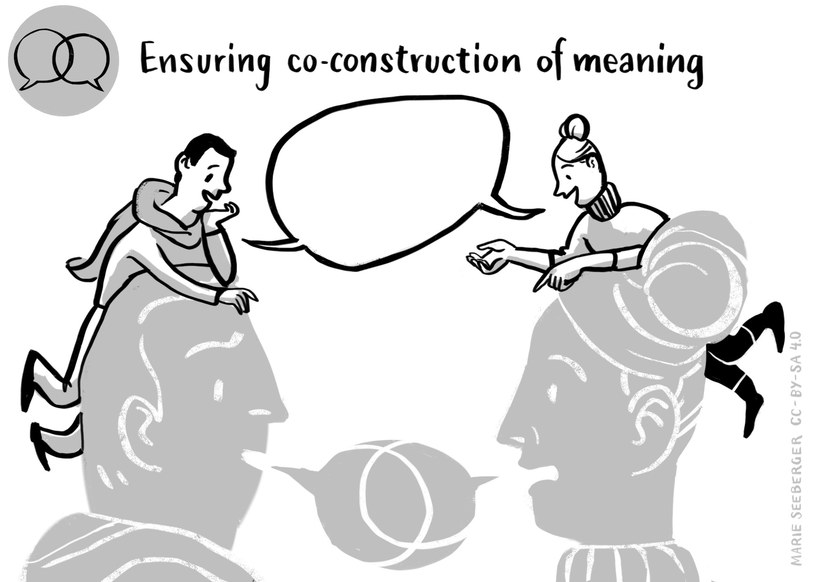
Meaning
Patterns of meaning and interpretations at times collide in intercultural situations. This is so because very often we use terms which mean different things to different people. A person who is confident in co-construction of meaning places emphasis on communicating and dialoguing with all people involved. Such a person makes sure that everyone involved has an understanding of how something are meant. The process behind this may or may not lead to the generation of a common meaning for a specific term or concept. Most important is that all people involved have a thorough understanding of how something is understood by a person.
Example
Lisa is an intern and during the first week of work, she is asked by a co-worker whether she would like to come along for a coffee. However, Lisa is very busy and declines the offer but remembers an article she read about 'the Italian coffee break'. Rereading the article makes her aware that the saying: 'Would you like to come along for a coffee' may actually have different meanings to different people. The next time she is asked to come along she takes the opportunity and in fact realises that this is true. When entering the café, her co-worker meets and greets colleagues from other departments, introduces Lisa to them and they chit-chat for a while, sharing information and opinions about issues before they are all returning to work. Lisa actually had expected that she would sit down with her colleague and they would have a face-to-face conversation about more personal issues. Realising this, Lisa initiates a conversation about the topic and she and her colleague exchange views of their understandings of 'having a coffee' and are quite amazed that such a little thing can have different meanings. This also makes them realise how important it is not to assume common meaning.
Activity: Exploring the other's perspective and meaning
Inquire into "different meaning and co-construction" in your surrounding. Next time you have a chat with a friend or colleague be curious about the meaning of words. If s/he says, for example, "this TV series I just watched was wonderful", ask him/her what s/he means by "wonderful". Use your curiosity and empathy for the person to inquire perspectives but don't be too insisting as otherwise you may irritate the person. Just be interested in the person's concepts.
What new perspective were you able to gain from this inquiry? Think about an example where inquiring into the meaning of something may be vital and co-construction of meaning essential.
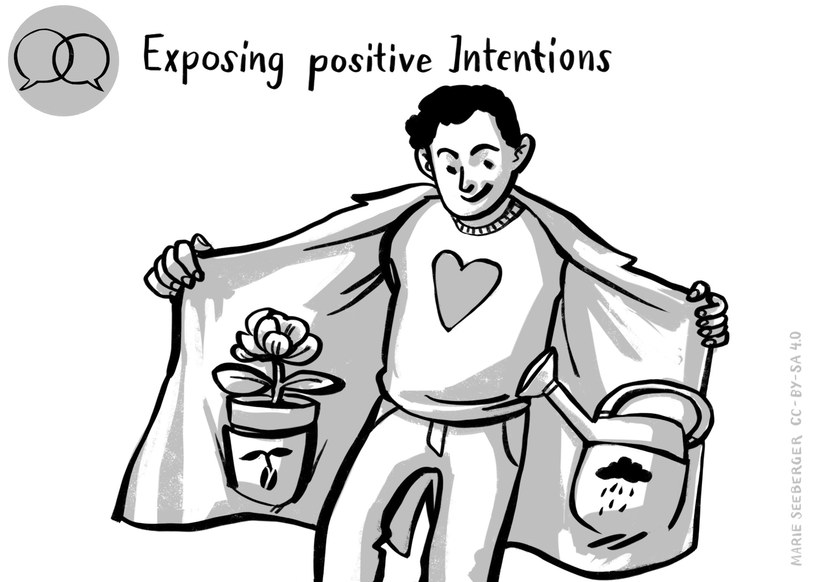
Meaning
Having an open mind when talking with people of other cultural backgrounds is not always enough. To know how to expose our positive intentions means that you are also able to deliver this attitude in a way that it is being understood. People with this competency know how to deliver their message in a clear and transparent context, but also consider the communicative needs of their counterparts. It especially means to be clear about your intentions, wishes and expectations, and that you are sure to display your position in a constructive and non-threatening way.
Example
Zamil has a new colleague who just joined his marketing team some weeks ago. Unfortunately, Zamil sees that his new colleague has not been meeting any of the set deadlines so far. Also, whenever she finally sends the information needed, Zamil sees that it is often not the data they agreed on to be delivered. The next time they meet, Zamil makes an extra effort to small-talk with her, using phatic expressions to ensure that a personal bridge is developing between them. He transparently highlights his needs but also emphasizes his offer for support and their common goals for the project.
His colleague is now clear about what Zamil needs from her and does not feel threatened by his feedback.
Activity: Case "How to tackle a difficult topic in a constructive way"
Write down the conversation between Zamil and his colleague (Zamil's part) in your learning journal. What could Zamil have said (quote!) to express his positive intentions? Note down the beginning of the conversation, and how he cultivates the relationship. Also write down how he approaches the touchy topic by showing his positive intentions.
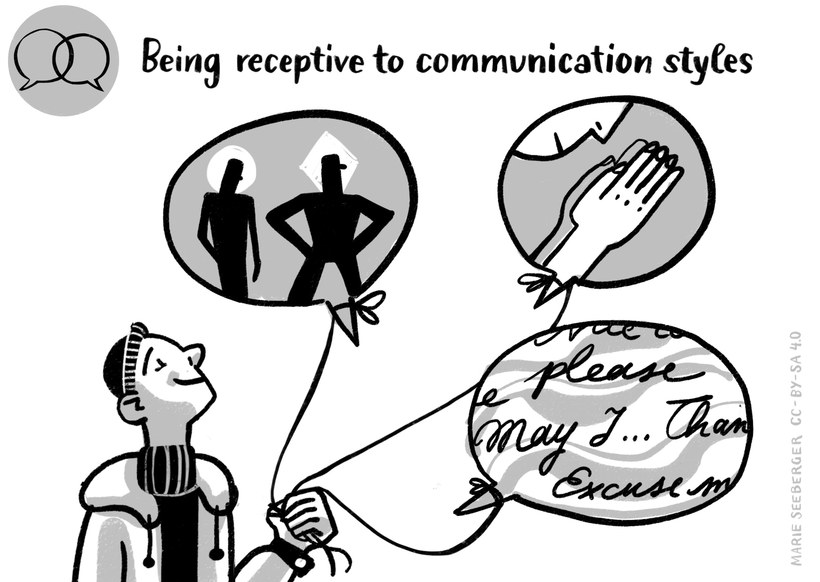
Meaning
Whereas Exposing positive intentions enables us to make ourselves understood in a way that displays our open-mindedness, being receptive means that we are also open to other people´s communication needs. It means we not only have an open mind but also know how to transport this attitude to our communication partners. We know which questions to ask to display that we do not seek to convince, but rather to understand our counterparts. We are sensitive to possible signs, for example, body language and mimics, and can correctly understand the intentions in high- or low-context messages.
Example
Elif is abroad and in price negotiations with a new customer. Even if her colleagues feel frustrated that their negotiation counterparts do not seem to "come to the point", Elif can quickly adapt to this communication pattern. She also finds out that there are some points their new business partners do not seem to be happy with, even though they do not voice it directly. Still, they seem to be relieved that Elif picks up their signals and suggests solutions for their concerns. At the end of a long negotiations, the new customer has developed a high level of trust towards Elif and her team, in large parts because of her attunement to the customer´s spoken and unspoken concerns.
Activity: Interpreting non- and paraverbal behaviour
The following video shows an interaction between a Chinese employee and his manager.
Source: IntercultureTV: Relationship boss – employee, 2017, URL: https://www.youtube.com/watch?v=y4hyMujT_Ew, accessed on 5.6.2023
Please pay particular attention to the non- and para-verbal communication of the employee. If you were the supervisor, how would you react to accommodate the needs of your staff? How would you interpret his non- and para-verbal signs and show your understanding of the underlying needs here?
Put your answers in the learning journal.
***
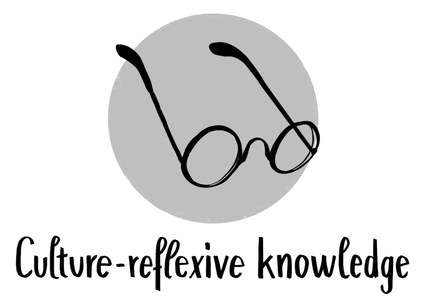
The last set of competencies considered in this session relate to a culture-reflexive knowledge. It encompasses more than referring to knowledge such as 'this is how things are being done around here'. Reflexive knowledge is knowledge based on conscious reflection and reasoning. It follows the rules of rationality and the knowledge that there is more than one way of doing things right. Reflexivity is thus understood as the ability to step outside one's own frame of reference and knowledge by enhancing one's understanding of reality through the eyes of the communicators and thus in their own terms. Developing culture-reflective knowledge thus requires the ability to reflect perspectives which refers to the ability of viewing things from different points of views and to consider issues in their relations, interdependencies and relative importance.
Another important aspect of culture-reflexive knowledge refers to being sensitive to context. This entails to acknowledge that context has an important influence on an interaction. And that an interaction not only takes place in a specific physical context (e.g. at the doctor, an office, in a bar) and is thus influenced by environmental conditions but that the people themselves are enmeshed in a personal context (e.g. strict order from their superior, organizational culture, immediate social context) which guides their encounters.
The last aspect to be considered is the awareness of global positioning. This refers to given asymmetries in encounters as it is important to acknowledge that there is a limit to changing perspectives. This is so because there are experiences we cannot share, perspectives we cannot take. For example, a "White" person can hardly anticipate how a Person of Colour (PoC) experiences a world where whiteness is the privilege. A person able to walk will not have the same perspective on side-walks and footbrigdes as someone who is reliant on a wheelchair in a world of pedestrians with two healthy legs. We therefore are required to meet the continuous challenge of balancing different approaches to the world and to overcoming the dominance of selective perspectives.
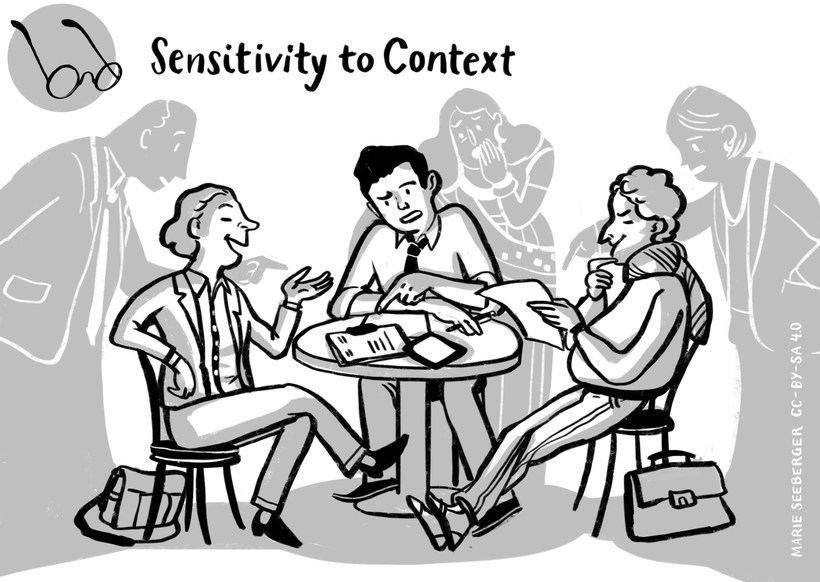
Meaning
We all have a tendency to overemphasize personal characteristics when judging a person´s behaviour and ignore situational factors. In social psychology this is called "fundamental attribution error". People who are sensitive to context place emphasis on inquiring, sensing and understanding the influence the context has on the interaction and the communication. The overall context relates to the environment, the setting and the location in which an interaction takes place or communication is practiced. Sensitivity to context also includes considering the immediate context of the people involved. This can include the organizational context they are in, social rules and mutual expectations that guide communication, interdependencies in relationships as well as aspects referring to the interpersonal history and type of relationship which exists between the people involved (so the counterpart is the basis for the reaction). Other contexts can be the emotional and mental well-being, a region, things that just happened shorty before the incident etc. People sensitive to contexts are able to sense possible expectations of language and behaviour related to the overall and personal context.
Trying to see this perspective here can also prevent us ourselves from becoming agitated, and thus start a negative communication circle. It also keeps us from feeling disrespected or frustrated based on the reasons of misunderstanding.
Example
Raoul has been working in the marketing department for five months and feels that he is slowly becoming a true member of the team when one day he opens his mailbox in the morning and reads: "Cleaning up the showroom is due on Tuesday, noon." He is perplexed if not shocked reading the message which he perceives as being very impolite and written in a tone he would not have expected as a member of the team and cleaning and tidying up the showroom is the last thing he wants to do. Thinking about the context in which the email was most likely written helps him to calm down. He remembers that Liane is currently working from home because her two children are ill and he can imagine that she was just trying to work off her to-do list. It may also be possible that she had not intended to send the mail off as is. Considering these context factors helped Raoul to calm down. He tidied up the showroom as requested. When a couple of days later, Liane thanked him for the job, he mentioned the email and it was only then that she realised what she had done. She apologised and Raoul was grateful that by considering the context he was able to place the message into perspective.
Activity: Finding explanations for irritating behaviour
Think of a behaviour of someone that you found disrespectful in some way. It might be someone who cut your way in traffic, someone whose communication style you find difficult to deal with or any other behaviour you find difficult to accept. If we assume a reason other than "wanting to be disrespectful", which context could explain this behaviour? How could it help you to find out more about different influential factors, and how could you do this?
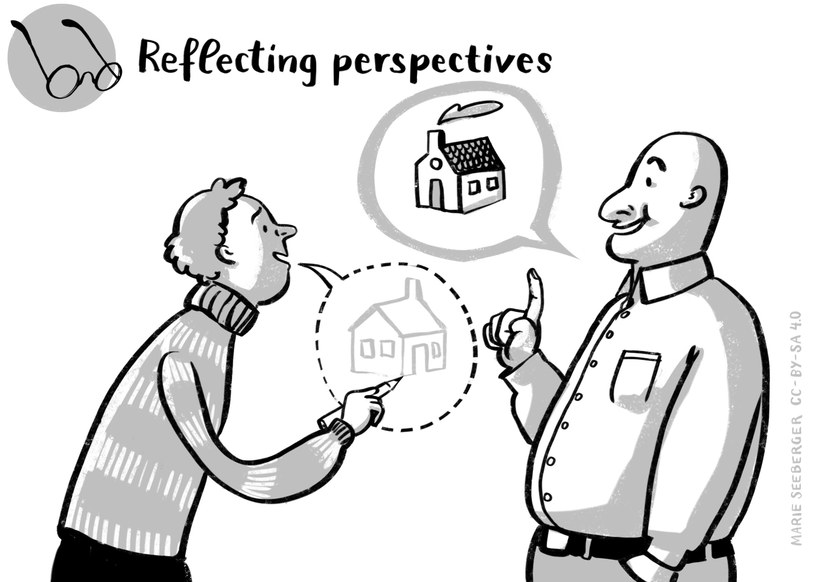
Meaning
Take any situation, we never have the whole picture, we only have one or some perspectives that we understand is the whole view. When we reflect our perspectives we keep in mind that there are more approaches than those that we might have in mind, that there are many "truths" and realities in their own respect. Reflecting perspectives means keeping in mind different cultural orientations and values but also numerous other perspectives that we cannot anticipate.
Example
Milena and Anna both have a child in elementary school and they are comparing their parenting styles. Christina loves rules, e.g. her son is not allowed to have an ice cream before dinner or watch TV after 8 PM. Milena finds that funny, she decides from situation to situation. Christine is astonished how Milena´s son will ever learn what to do. Milena answers: "with your approach he learns rules, with my approach he learns how to assess the situation and me. Both perspectives are helpful."
Activity: The world upside down
- Have a look at the map below. Search for the country you were born in. Was this more difficult for you than usual? Why is that? Describe the perspective that you see.
- What could you do to acquaint yourself with the unfamiliar view and make it a more familiar perspective? Note down three such strategies in your learning journal.
Image source: https://www.reddit.com/r/MapPorn/comments/94993a/do_you_know_how_the_world_map_looks_in_australia/
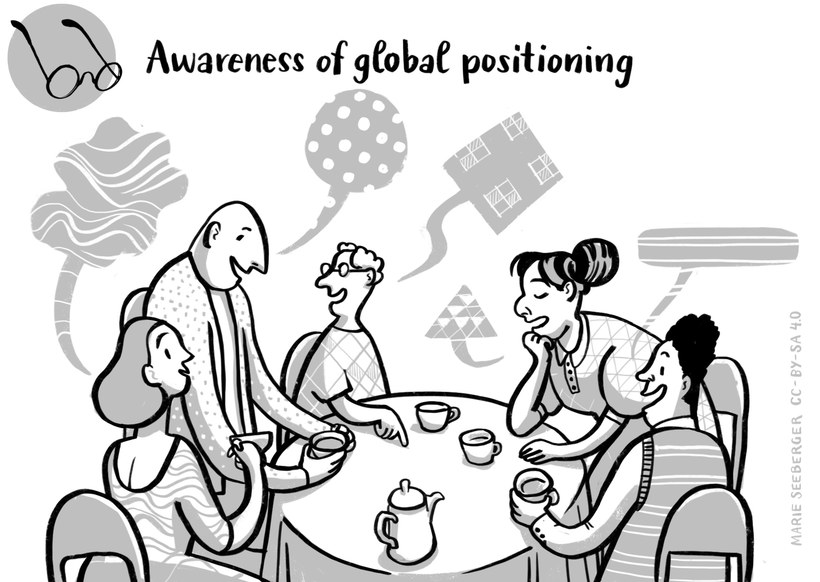
Meaning
Persons who are aware of global social positioning take macro influences of an encounter into consideration and incorporate pre-distributed privileges. Whenever people meet there is one thing we have in common: we are all human beings with own dignity, but there is diversity in the way that societies and cultures judge the value of attributes like gender, age, physical abilities, religion or spiritual beliefs or any worldview, wealth, educational background, sexual orientation, parental status, language skills and many more factors. These judgments have huge influences regarding our chances in life. Some differences are not only prejudged by most societies, also living conditions are oriented towards a specific normality that discriminate or excludes variances. Hence, pre-distributed privileges and chances for career and success in life are a result. Keeping this in mind, we might be easier able to accept a perspective we do not share and balance powerful differences. It is a practice to deconstruct power asymmetries acknowledge collective experiences like living in a diaspora.
Example
Ryan (US-Citizen, white male) studies International Management, a Master program where his fellow students come from many countries. One student, Natalia (a female Kyrgyzian citizen, scholar) is visually handicapped, and Ryan financed part of his studies being one of her scientific assistants. In the 3rd semester he decides to apply for permission to write a Master thesis together with her on diversity management as a topic. He is aware that it would be easier for him, faster and less risky to write the thesis on his own. However, he is confident that he will learn a lot more about diversity and his own approaches to diversity with the experience of writing the thesis with Natalia than he would learn from the content of pen and pencil research. Not least, he has a high motivation also supporting her.
Activity: Privileges and disadvantages
Have a look at the following checklist that lists 50 privileges. Go through the list and note down the number of the privileges you are aware of.
Checklist: 50 potential privileges in the workplace
(You can do a right click + "Save link as..." (or similar) to download the file.)
Then write down the answers to the following questions in your learning journal:
- How many privileges do you have? How does it make you feel?
- Name one disadvantage you face yourself. How do you handle it? Give an example.
- How do you handle disadvantages of others? Give 2 specific examples.
